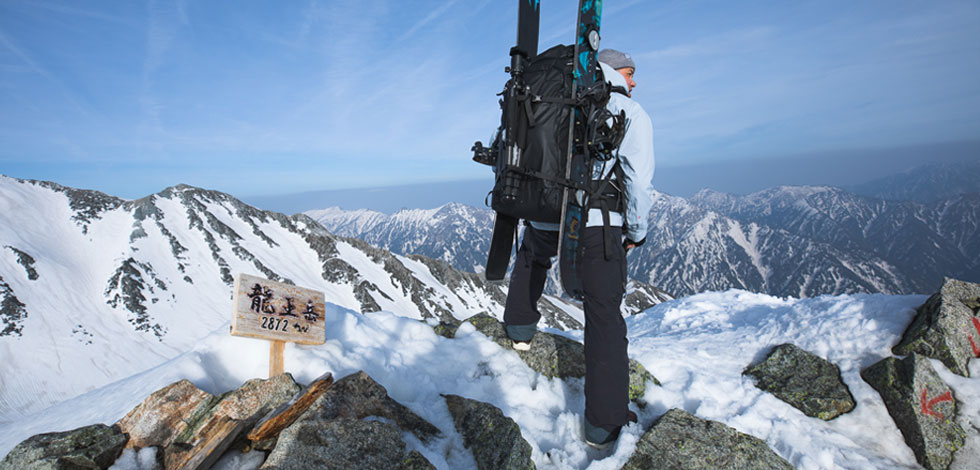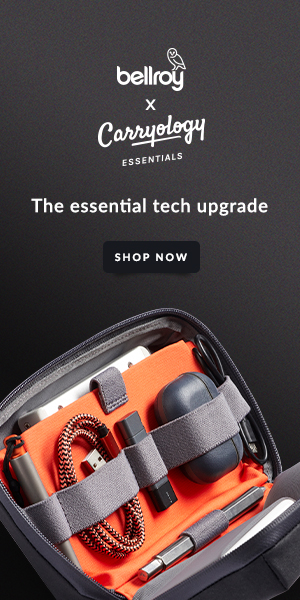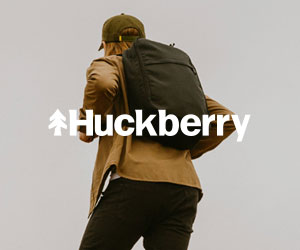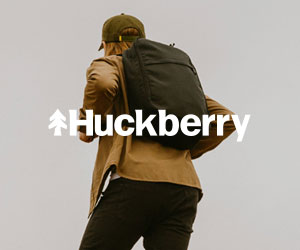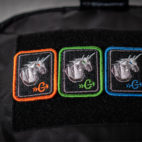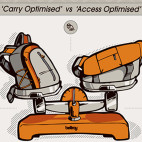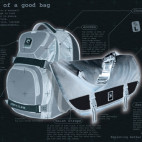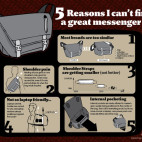Building Elite Camera Bags: An Interview with Ian Millar
For Ian Millar, 25 years of experience culminated into the creation of Shimoda Designs. Beginning with a love for design, then the outdoors and photographing action sports, to becoming the lead designer of f-stop. Now only two years old, Shimoda is one of the world’s most elite adventure photography bag brands, reached for by hardened pros all over.
So on the cusp of their second Kickstarter for his Action X collection, we caught up with Ian to talk inspiration, motivation, and what makes his gear stand out in a crowded marketplace.
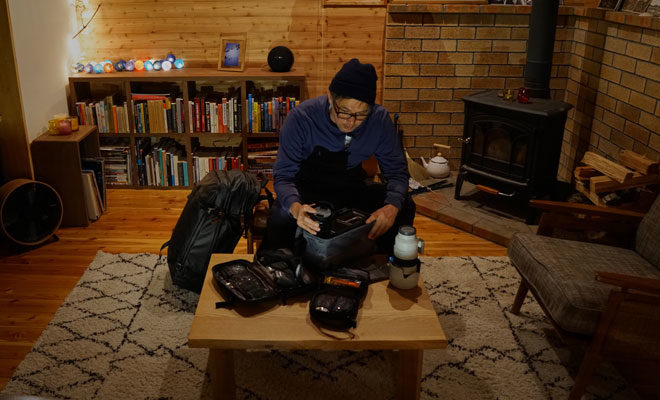
For those who aren’t familiar, what is your professional background?
By title I manage Shimoda Designs but the core of my professional activity in the last 13 years has been as a camera bag designer. In my current situation, this includes brand direction, developer, content creator, product manager, coffee maker, etc. I pretty much do it all with the help of a support team.
You grew up in Canada – how did living there lay the foundation for your career?
Over my time in Whistler I began dabbling in different aspects of design. I started with graphics and websites, and grew from there. Fortunately my first Web work was for a snowboard company and was at a time when Flash websites paid a handsome wage. This allowed me to afford a lot of toys for mountain biking, snowboarding and photography. I accumulated a lot of images over those days and only a small portion were ever published. So I started a mountain bike magazine as a way to share them but also express my design style.
Modest Bike magazine ended up being a crash course in media and would lay down the foundation for many relationships I have made over the years, but also was the roots to many of my skills and eventual career path.
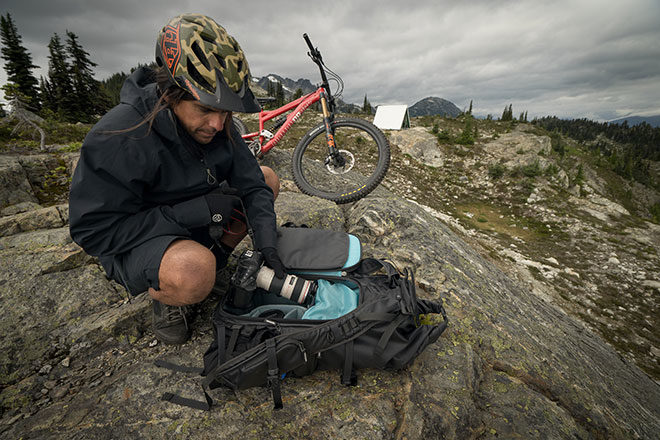
What ultimately brought you out to Japan?
I am half Japanese and was raised entirely by the Japanese side of my family (in Toronto, Canada). I came to Japan on a snowboarding trip about 13 years ago. It was a 10-day trip that turned into 30 days of knee to waist powder every day, with only a few people around. I made return trips almost every year after, until I finally moved here and started my own little family. What ultimately kept me here was something my aunt said – she asked, ‘Doesn’t it just feel like home?’ She was right and since then it’s been home.
Where does your passion for the outdoors and adventure stem from?
That’s a good question; I grew up far away from the hills. When I was young the closest thing to ‘adventure’ was watching World Cup skiing and skateboarding. I guess it makes sense that evolved into snowboarding and moving out west. I have always liked being outside, maybe playing hockey on frozen creeks prepared me for enjoying the cold. While I primarily exist in the mountains, I have the same love for exploring urban environments.
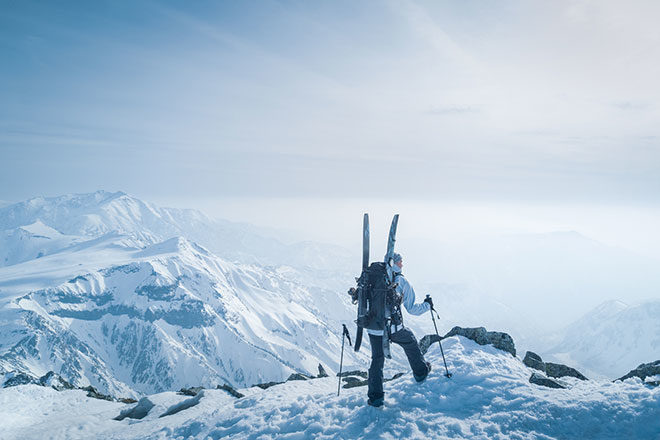
You grew up mountain biking and snowboarding. How was that instrumental in shaping the direction of starting your own brand?
With camera bags, the idea of compromising a day out in the mountains because I have to carry the weight of camera gear isn’t acceptable to me. Whether on foot, bike or board, I am out there to have a high level of fun and I am not going to let carrying a camera spoil that. Minimizing that compromise through design is a big drive in my work and the direction of Shimoda. I don’t like to hear people say they can’t do something because they ‘have to’ carry a camera. I aim to eliminate those types of excuses.
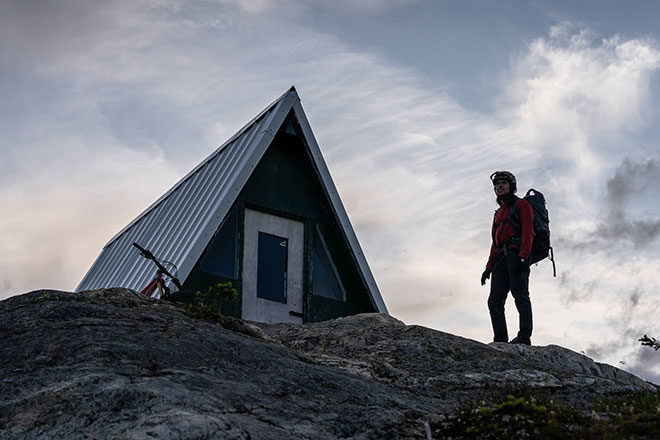
What was your inspiration in starting this brand? Why did you choose the name Shimoda?
Shimoda is a little surf town in Japan. It’s part of the Izu Peninsula that juts into the Pacific Ocean. I was there taking a time-out after leaving my previous job. By coincidence, I began talking with the folks who would help develop and fund my vision for Shimoda during that trip. There is so much of my past invested in Shimoda (the brand) that is inadvertently a reflection of the past 25 years of my life. It’s a natural evolution for me to be doing this.
What general steps are involved in your creative process?
Generally product development stems from the creatives I communicate with and my own needs. Since I am out there, taking images, video or whatever else I may be up to, I have a good understanding of what is needed and that becomes the base of most projects. From there I will create artwork and get a prototype made. If the prototype is usable, I test it and eventually go to the factory and revise it until I think it’s usable on a bigger scale. I spend a lot of time working with pattern makers trying to get things right. I put more attention on testing and evolving physical prototypes than on creating good-looking designs on paper. Very rarely does the original artwork reflect the final product. I prefer to sculpt the physical item with pattern makers based on my time using it in the field. You end up with a much better understanding of how things are made and what is sensible with respect to mass producing a product.
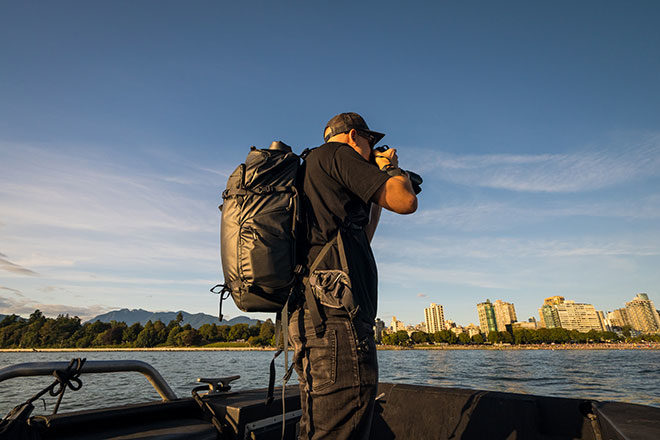
Are there any key insights that guide your vision?
It’s mostly through adventure sports. When I’m out wandering in the mountains, I come across all types of people. Many have their own ways of doing things and I often cross-reference that with the habits I see from our pro team. I see a lot of different situations that could be accomplished with much more finesse. It’s strange when you watch people do things purely out of repetition, while completely neglecting efficiency. I guess you could say a lot of my vision comes from observing.
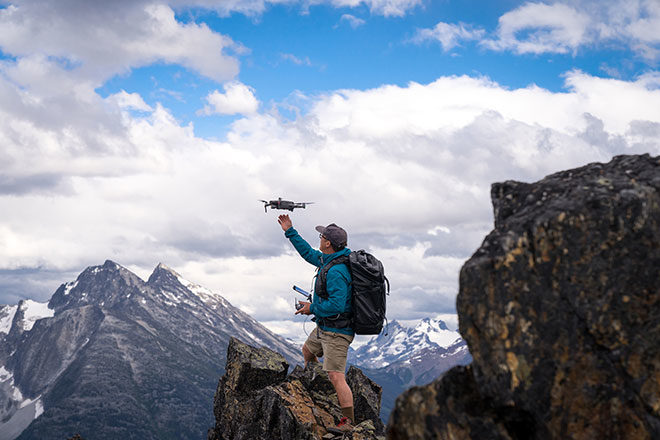
How would you describe your design aesthetic and what influences the style of Shimoda?
I don’t know how aware the Carryology audience is with regards to what goes on domestically in Japan, but it has its own aesthetics – that I love. It’s clearly cliché these days, but in many cases, society blends seamlessly with nature. I am not 100% sure Shimoda is a pure expression of my influences but it’s definitely present. I love the way many people in this country use textiles, colors, and textures to make you feel something. That kind of communication is very welcome by me.
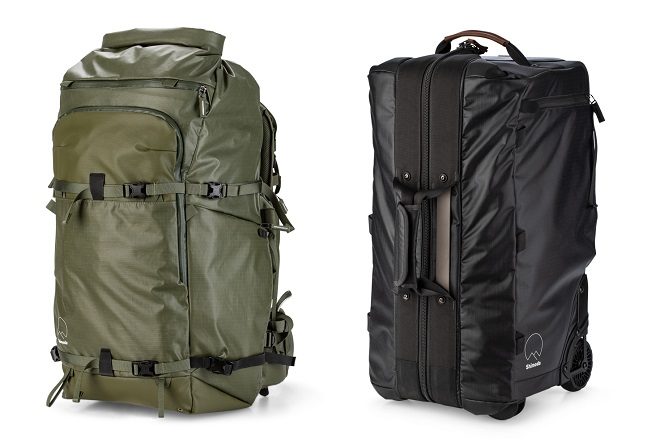
At the end of the day we need to make functional camera bags that can be relied on in complex weather and terrain. It can be a challenge to merge function and durability with hip design. I can’t say for certain if we have been successful with this but from the interactions with our community, I feel like people are getting more than just a camera bag when they buy into Shimoda. Maybe some people are picking up on a feeling.
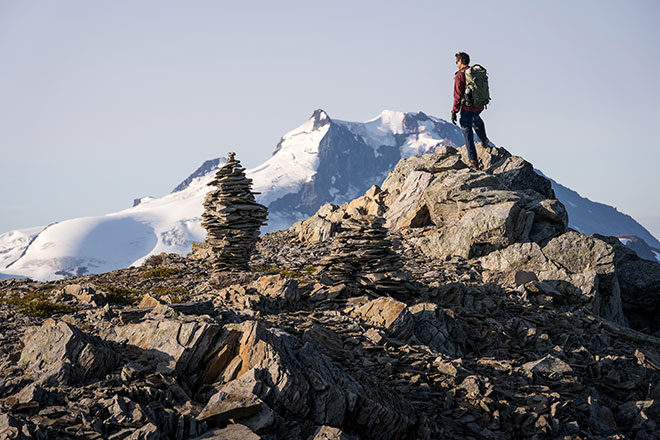
I’ve had the chance to test out the Explore Carry-On Roller and must say I’m quite impressed. It’s definitely something that I have wanted to add to my collection. What inspired the doctor bag style opening?
All credit goes to Peter Waisnor, he is the one who made Shimoda happen from a financial sense and is also president of Tenba camera bags. He created a similar design and from the minute I saw it, I knew it was the way forward.
What are the details in your designs that separate your bags from others?
I think one of the key design traits is our harness. We have an adjustable torso height and you can swap out the shoulder straps. This way women can choose from three different women-specific models to fit their body. The straps and belt also have pockets for food, drinks, bear spray, or a mobile phone. These are key features for active people. The more energy you spend removing your pack to access the basics, the less you will remove it to get your camera gear. We only have so much energy and patience; the longer we’re out being active, the quicker the fuel evaporates. So, being able to fuel up without breaking your stride is a key element to our design theory. Our design leads to more energy to focus on creating images.
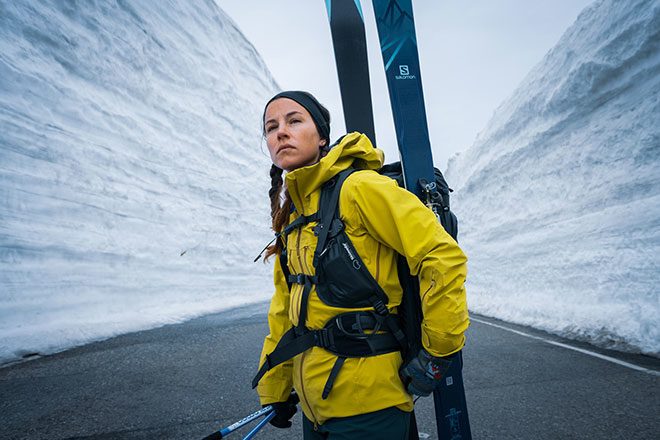
With that said, I think one key aspect that makes us different than others is the fact that I am extremely hands-on with every aspect of the brand. I’m testing the bags regularly, but I am also in the factory tweaking them. I am familiar with every detail of the design but also the production side and what it takes to bring a backpack to market. It’s important that a developer understands what it’s like to be running out of daylight, five hours away from warmth, while standing on a mountain in a whiteout. If you don’t understand this type of existence, you risk the livelihood of your customer when it comes to making the pack marketable. It’s inevitable that a quality backpack will cost more than the market is willing to endure and costs will need to be compromised. You better hope that person fighting to keep certain features or cost-cutting decisions knows what it’s like to depend on the gear you use.
How do you test your product? What do you look for when testing? How many prototypes do you go through before release?
I mostly do long-term field testing; the factory does all the usual repetitive mechanical tests, but I have never put too much thought into those – most material and construction techniques of a certain level will pass those mechanical tests. The only time I depend on them is for load capacity and when the seam will break. But even then, it does not reflect real-life use. We put the bags to use in the field, starting with me, and after I’ll tweak the prototype as necessary, then with a smaller group, tweak again if necessary, and then take it to a larger amount of people before we launch it. Sometimes there are a lot of prototypes, sometimes only a few. It depends on the product and how complex it is.
Some products like the X70 were developed primarily with Levi Allen and Gabe Langois. I relied on those two for concepts because they use the gear that the bag is targeted for (RED cameras). Same with the Top Loader- Scott Serfas was the lead in that development because he shoots from a chest-mounted bag in the winter months. For our women’s straps we had over 35 women participating in the development of those. With that said, I do test everything, I put in days with all the products – even the women’s straps (I used the Petite ones for about three months). I need to be confident in my communication and knowledge of our products.
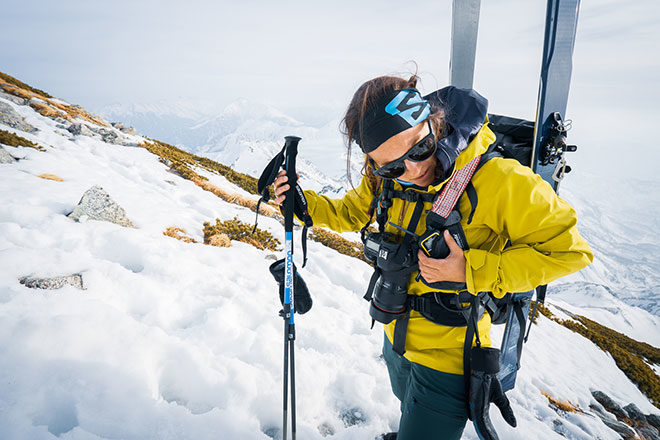
What inspired the new Action X collection?
A few things. I wanted a bag that was an extension of my own actions. Action X is very suited to the sports and activities I get up to. But it’s also a collaborative response to what our customer base and team wanted. You could say it was inevitable that this line would exist. A lot of people asked for a black bag, a Core Unit with integrated side access, others wanted more confidence in the base material, Paris (Gore) wanted the shoulder strap water bottle pocket to have a zipper (so it could not collect snow), (Scott) Serfas wanted a chest-mounted camera bag, Levi (Allen) needed a bigger pack for all of his video kit, skiers wanted ski straps and a helmet holder. I didn’t disagree with many of the ideas that came my way and started working towards satisfying those requests. It’s easy when the designer also wants the same things. Whether we use the word ‘inspiration’ or just ‘listening’ to what the community wanted – that is why Action X is what it is.
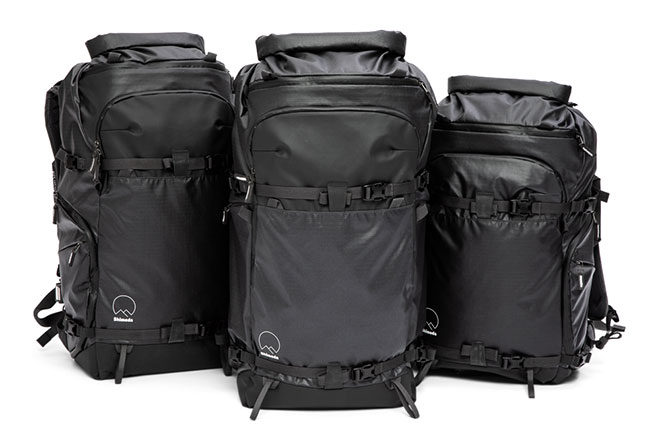
How long did it take to all come together?
It actually started with a 70-liter version that was originally going to be an extension of the Explore Series. I started using the first prototype in spring 2018. Over time, and with more input from customers on the Explore Series (it was still new then), I saw room for a more action-focused line. One that could step up to more demanding adventures. So I shifted the direction of the 70 and made the Action X line. So, roughly a year and a half now.
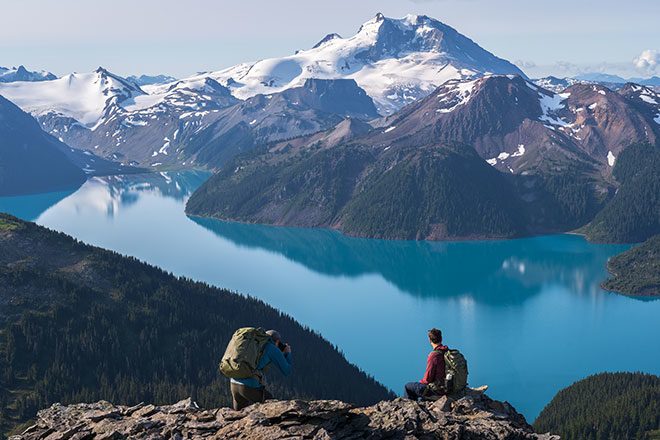
Did you experience any setbacks?
Nothing too exciting, but innovating your own product comes with a lot of challenges (I presume) many people are unaware of. In some cases when you upgrade a product to a Version 2… you need to balance global distribution and supply chains. Somehow you have to find a magical way for the transition to go seamlessly. Unfortunately that is impossible as we will never sell out worldwide at the same time (both customer-direct and retail). That’s just a couple of the complications, there are many others that share the same spirit. It can be motivationally deflating at times and I think we spend more time trying to find answers to backend limitations, than we do making cool products. When you’re responsible with resources, wasted materials and sustainability, it’s inevitable that your product will be compromised from its original glory. So that’s always an emotional setback.
How is the Action X collection a natural progression for the brand?
Before Action X existed, we had the Explore Series. We could not launch the brand with multiple product lines in 2017 and made a single collection that fulfilled a large range of adventure photography needs. As I spoke with more customers and team members, it became evident that there was room for something more robust and action intensive. At the same time, I did not forecast that as many landscape photographers would be drawn to Shimoda. There is a demographic between 40-55 that I was pleasantly surprised took to the brand. Which in retrospect is a bit naive since I’m in that group.
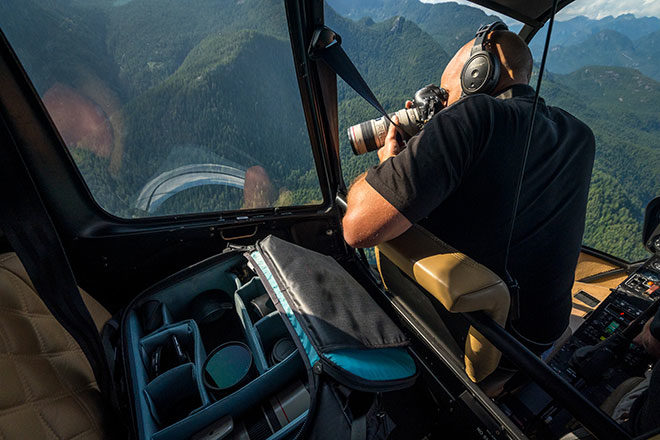
What are you most proud of from this collection?
I think I have alluded to it a few times during this chat, but it’s being able to bring together so many ideas from real-world users – the people who get out there and do what they love to do. I never buy other camera bags (rarely do I even look at them), I don’t design around USP’s (Unique Selling Points) or market trends and never want to be influenced by them. I live a quiet life in a village of 9800 people. Of course I have the Internet and I’m tuned into what’s going on globally, but when it comes to Shimoda’s product development – not just Action X – it’s driven by our growing community and our collective real-world experiences.
How does this design help when out in the field?
Action X is very focused on the user experience. So much of it is about access to your essentials like food, water, sunscreen and a mobile phone… the little things that steal energy while trying to access them. When combined with quick side access, and rear access for when you have more time to set up an image… the whole experience is very simple and efficient.
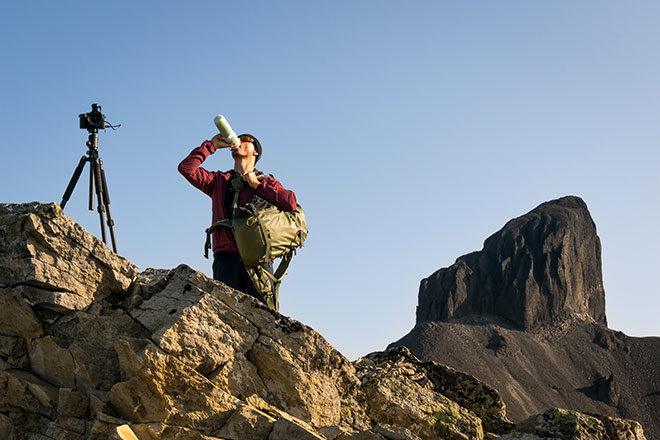
We have also constructed the bag with more Action Sport-minded materials with respect to abrasion and durability. Subtle features like ski straps and a helmet holder help simplify your packing and carry process. Small details like glove-friendly buckles make a pain-free difference during a long and cold day out. Being able to remove your belt when you’re commuting through airports or transitioning through the city adds an extra touch of freedom and flexibility. Two padded handles lessen the burden of lifting a heavy load, etc. There are a lot of features on this bag that add up to an ironically simplified user experience.
You chose to take the crowdfunding route when launching Shimoda, how was the launch on Kickstarter? What did you learn from the initial launch that you would do the same and what will you do differently with the introduction of Action X?
Crowdfunding is a great way to expose our brand to a large audience. I don’t think there is a better way to introduce a new product than Kickstarter. We raised just over 180k for our brand launch. We do not hide the fact that Kickstarter is a means to brand exposure. But what I think is more important is that it lets us offer the gear at an introductory discounted price. Backers are getting 30% off product that will likely not be on sale for a long time to come. In my opinion it’s a win-win for everyone. Customers can have 100% confidence we will deliver the product we are offering.
Regarding what might be different… This time around our community has grown so I would expect to see more Action X content or features when we launch. We have worked with a lot of good people over the last two years and from my personal conversations with them, there is a genuine positive energy around the new line. I think because so many of the people we work with are directly involved in the development process, it will lend to a better atmosphere around the campaign.
Also while our campaign is a lot more polished than before, the actual product is much more refined and a strong reflection of the feedback we received from our initial campaign and product line. I have tried my best to process all feedback and make product everyone wants.
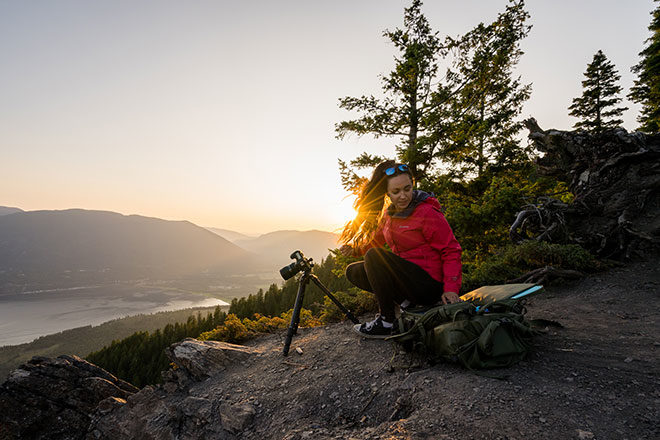
What are your goals and expectations for Shimoda?
That is a tough question. I want Shimoda to be a brand that is known for making products that are reliable in challenging terrain and poor weather conditions. If we can become the go-to brand for serious adventure photographers – based on our actual product and who we are as a company – I will be happy and satisfied.
What other products do you plan on releasing in the future?
We plan on rounding out the line-up. We are still in our early stages as a brand and need to be mindful of resources and what the market will actually buy under the Shimoda name. But I definitely want to make some less “intense” camera bags with our Shimoda design flavor.
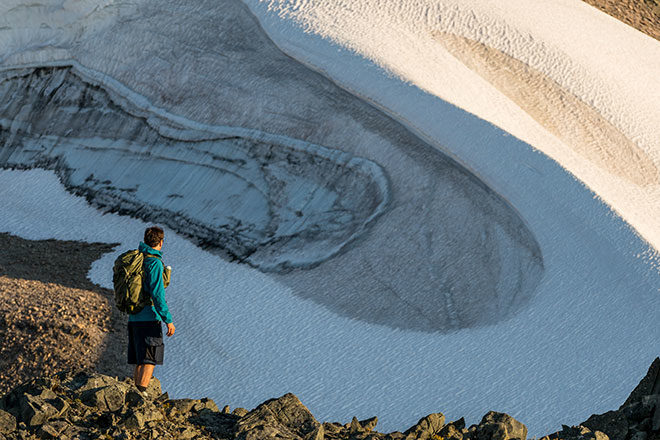
What are you working on at the moment?
Producing the new Action X line has taken up most of my time. It’s a serious endeavor doing a Kickstarter with a full collection of gear. We are wrapping up everything related to the actual launch and will now transition into doing the ongoing support for the campaign. I am always working on new designs in the background, but those are a long way away still. I really like to let ideas breathe and mature into better ones before talking about them.
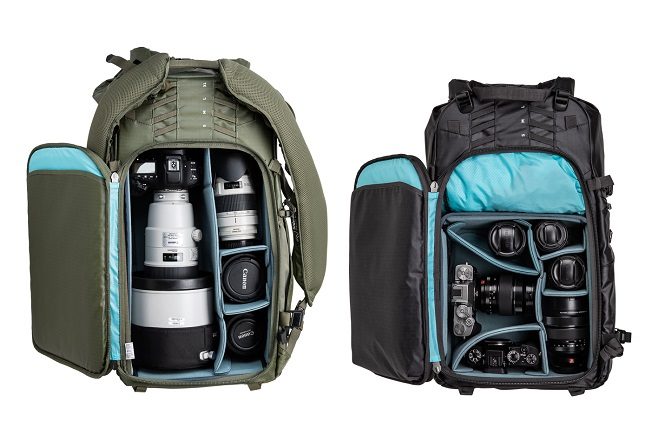
For any aspiring designers, do you have any words of wisdom?
For any job, task or adventure, you need to be ready and in a position to be able to perform. My advice is keep stacking life experience and stay active. I can best relate it to snowboarding. There is nothing worse than the perfect blue-bird day presenting itself and you’re not mentally, physically or emotionally ready to go ride the line of your dreams. You have to keep yourself constantly in the zone and learning or you will miss out on those character-building moments.
Design is just a small part of the process.
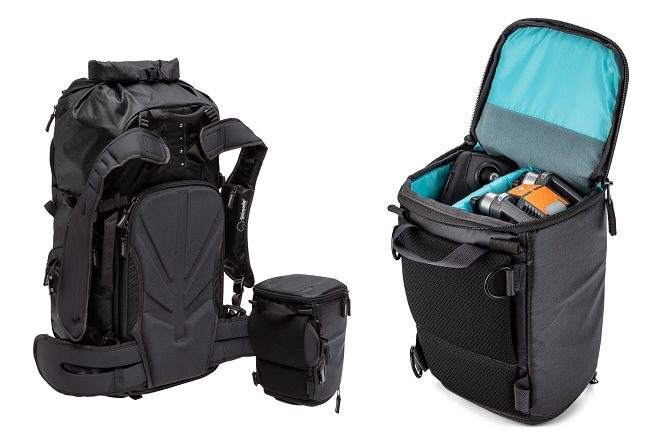
Check out Ian’s latest Action X collection Kickstarter!





 Carry Awards
Carry Awards Insights
Insights Liking
Liking Projects
Projects Interviews
Interviews
